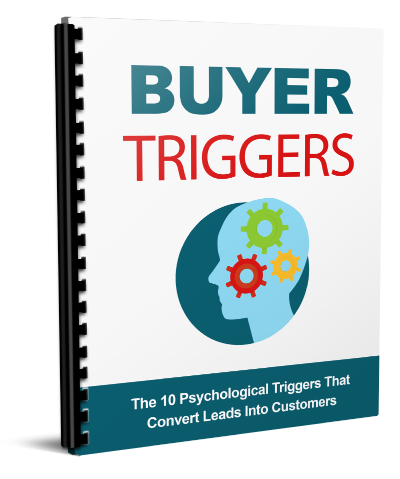Many people gauge the success of their business by their profit levels, and when it comes to running a business, it’s generally pretty easy to tell if you’re making a profit or not.
But how do you know if your business is doing well enough? What are the essential business metrics you need to know to keep track of the growth of your business? Sure, a little profit is preferable to no profit, but more profit is always the best case scenario.
A few words why tracking is essential
Business metrics can help us tell how well our business is doing, and pinpoint the areas that might need closer examination.
The main areas of focus for business metrics include not just overall profit, but your performance within your niche or network, as well as the overall feelings of satisfaction from your customers, your team (if you have one), and yourself.

So how are business metrics calculated? What are some areas where a business owner should look to determine how well a business is really doing? It turns out, there are four particular areas where you can focus your metrics to learn more about your business.
Essential Metrics #1
The first metrics to keep in account are Sales Metrics. Some sales metrics are pretty easily calculated. For example, you should have your leads organized so that you can tell where everyone is on the sales funnel at all times. Which deals are open? Which are closed?
From these figures, you can calculate what’s known as a Sales Win Rate. To calculate this rate, take the number of leads you’ve won, divided by the number of potential leads, and multiply the result by 100.
Sales Win Rate = (leads/potential leads) X 100If you made 10 successful sales out of a total of 20 opportunities, for example, your Sales Win Rate would be 50% (10/20 =0.5 x 100 = 50%).
Another sales metric that often falls by the wayside, but can have enormous impact on your sales metrics is Lead Response Time. How long does it take you or your team to respond to a lead inquiry? Let’s say you receive a question via your website or social media account. How quickly do you respond? The faster you respond, the more likely a prospective customer is to continue their path down the sales funnel, which can lead to a big sale for you.
Essential Metrics #2
Marketing Metrics. The metrics related to your marketing endeavors may be some of the most telling figures you’ll see, especially when it comes to rating your input of effort versus the profit you actually receive.
Some very basic marketing metrics are those which measure your website traffic and traffic sources. There are plenty of tools out there to help you analyze these figures, including Google Analytics, SemRush, and Moz. Why are these figures important? Understanding your traffic flow can help you appreciate which ads are performing well, which links are being followed, and therefore help you decide where to best invest your marketing budget.
There are some very important metrics related to conversions, as well. Your Conversion Rate will help you appreciate how many website visitors become customers. While this is a broad figure, conversion rate compared to traffic flow will help you understand trends in which site visitors are here to purchase, and which are here to shop around a bit. You’ll be able to compare the buying habits of those who arrive at your site from a banner ad, versus those who link there from a social media influencer’s post, for example.
CHECK OUT THE LANDING PAGES TOOL
THAT INCREASED BY 114% MY LEADS CONVERSION RATE
CLICK THE BUTTON BELOW TO GET:
| 200+ Pre-Built Converting Templates | SEO Friendly Pages |
| Easy to Use Page Builder | No High-Tech Skills Needed |
| A/B Testing | Integrations (Autoresponders ,CRM) |
| No Limits (Leads, Publishings…) | Free up to 500 email subscribers |
| 99,9% Uptime | GDPR Compliant |
| Popups & Alert Bars | 14-Days Free Trial |
Another key figure to be aware of is the Customer Acquisition Cost. This figure will tell you whether or not your marketing efforts and spending are really paying off.
To calculate the Customer Acquisition Cost, divide the total amount spent on marketing and advertising over a period, and divide it by the number of customers acquired from that campaign.
Customer Acquisition Cost = Mkt+Adv Amount Spent / Customers NumberAgain, your traffic analytics will help you here, along with any special codes or distinguishing links you use to guide your customers to a particular offer.
Read also: The Scientific Way to Track and Measure your Digital Marketing Campaigns
Essential Metrics #3
And what about Financial Metrics? You’re already familiar with the idea of profit, and you may already be familiar with the concept of Gross Profit versus Net Profit.
Gross Profit calculates how much you made from a sale by subtracting the cost of the product from the amount you received.
Gross Profit = Amount Received - Cost of the ProductYou bought a certain item for $10, and you’re selling it for $20. You may $10 profit on each sale.
Net Profit includes all related expenses involved in a sale.
Net profit = Total Sales - Total ExpensesLet’s use the same example: the item costs you $10, and you sold it for $20. You also spent $1 each week on Facebook ads, and it took you 2 weeks to make your first sale. Now the expenses have increased to $12, making your Net Profit $8.
The Net Profit Margin Ratio can help you examine where every dollar goes. To calculate this figure, divide your Net Profit by your total sales, and multiply that figure by 100.
Net Profit Margin Ratio = Net Profit ⁄ Total Sales x 100In the above example, your Net Profit is $8, and your total sales figure is $20. 8/20 = .4 x 100 = 40%.
Granted, these are simple numbers used for the sake of explanations, so don’t expect a 40% Net Profit Margin Ratio. Typically, a business that is doing well will experience a 10-20% profit margin, though this can fluctuate greatly over time, depending on your business and niche.
Other Metrics
There are a variety of figures that may or may not relate to your business, depending on your product, your sales process, and your business structure.
If you’re working on a variety of different projects at the same time, you may want to measure the overall productivity and cost variance between projected costs, actual costs, and the actual profit made from the project in question. This could include a variety of time and monetary investments.
If you hire a social media manager (interested to hear more?) to help you streamline and make your social media outlets more visible, you might want to measure how well those efforts are performing. If you devote a significant amount of time and energy to an email blast campaign, you’ll want to know if it was worth it.
Those who hire project staff, such as a social media manager, copywriter, or web designer may also want to gauge the satisfaction of those employees with the job they’re handling. Employee engagement leads directly back to customer engagement, so keep an eye on factors like turnover, absenteeism, and revenue generated per employee.
And of course, pay attention to customer satisfaction, as well. While you can’t expect every customer to stick with your business for the rest of forever, you can calculate your churn rate, which indicates how quickly customers come and go.
This goes hand-in-hand with the Customer Retention Rate, which will give you further insight into how long customers stick around. By subtracting the number of the customers at the start of a period (E) from the current number of customers (N), then dividing that figure by the number of customers at the start of the period (S) and multiplying by 100, you’ll be able to calculate your Customer Retention Rate.
Customer Retention Rate = [(E-N)/S] x 100Say you started the year with 20 customers, and now you have 30. 30 – 20= 10/20 = .5 x 100 = 50%. You have a 50% Customer Retention Rate in this example.
Wrapping Up
These are just a few of the many metrics you may choose to follow in order to gauge your business’ overall success. You may need to revisit these metrics frequently, or just periodically, depending on your business as well as your short term and long term goals.
While calculating profit is a great place to start, there are many aspects that work together to create a truly successful business. Don’t let yourself be caught unaware by ignoring a measurement that may be more impactful than you think!









